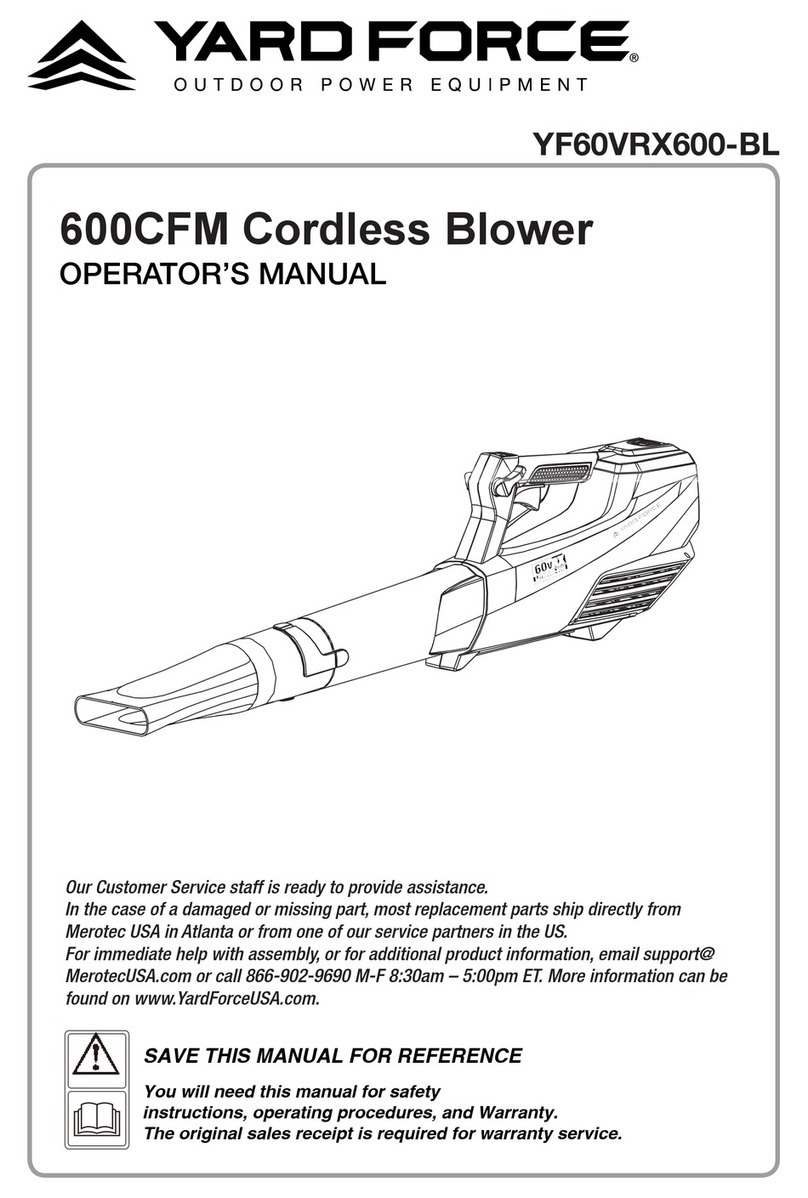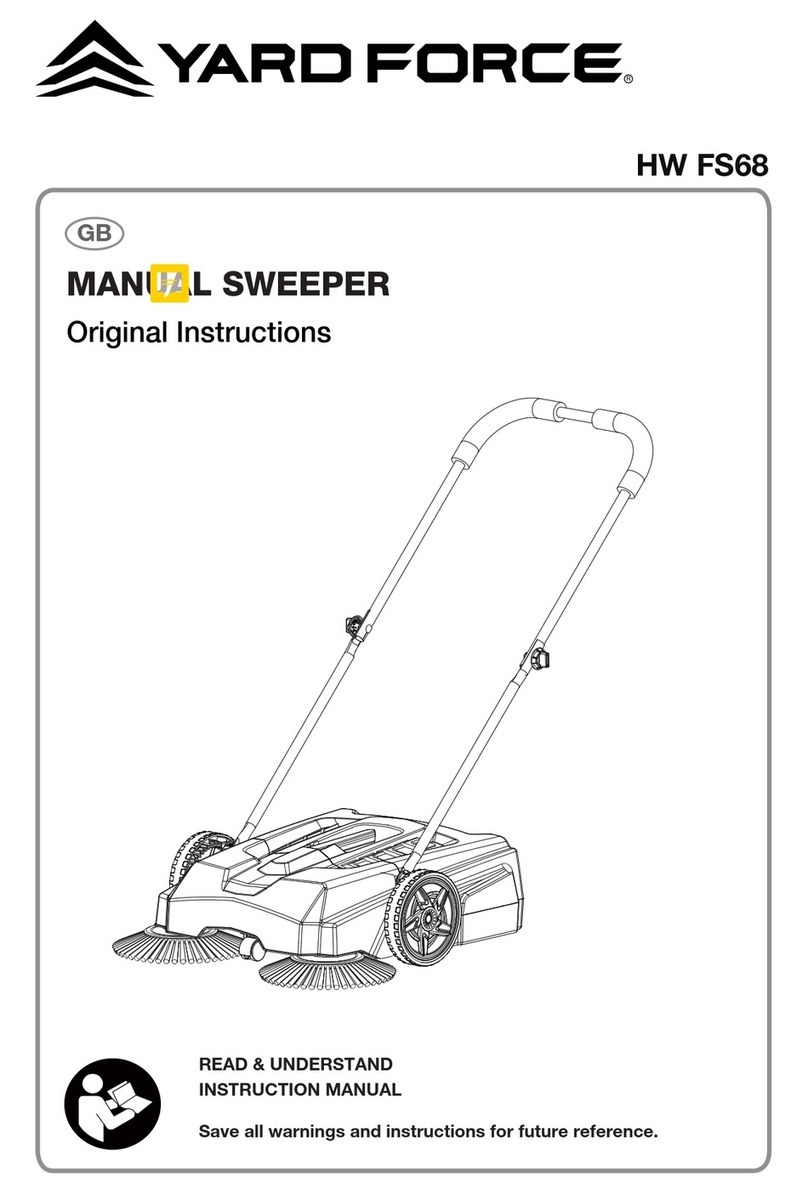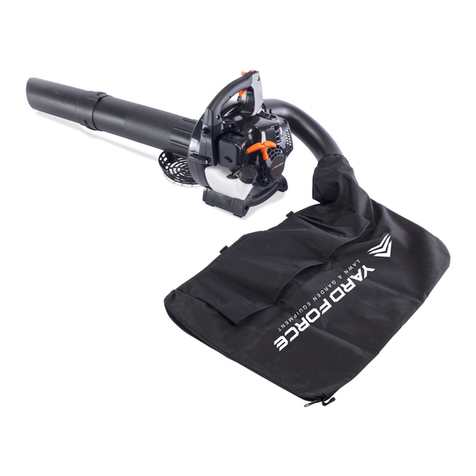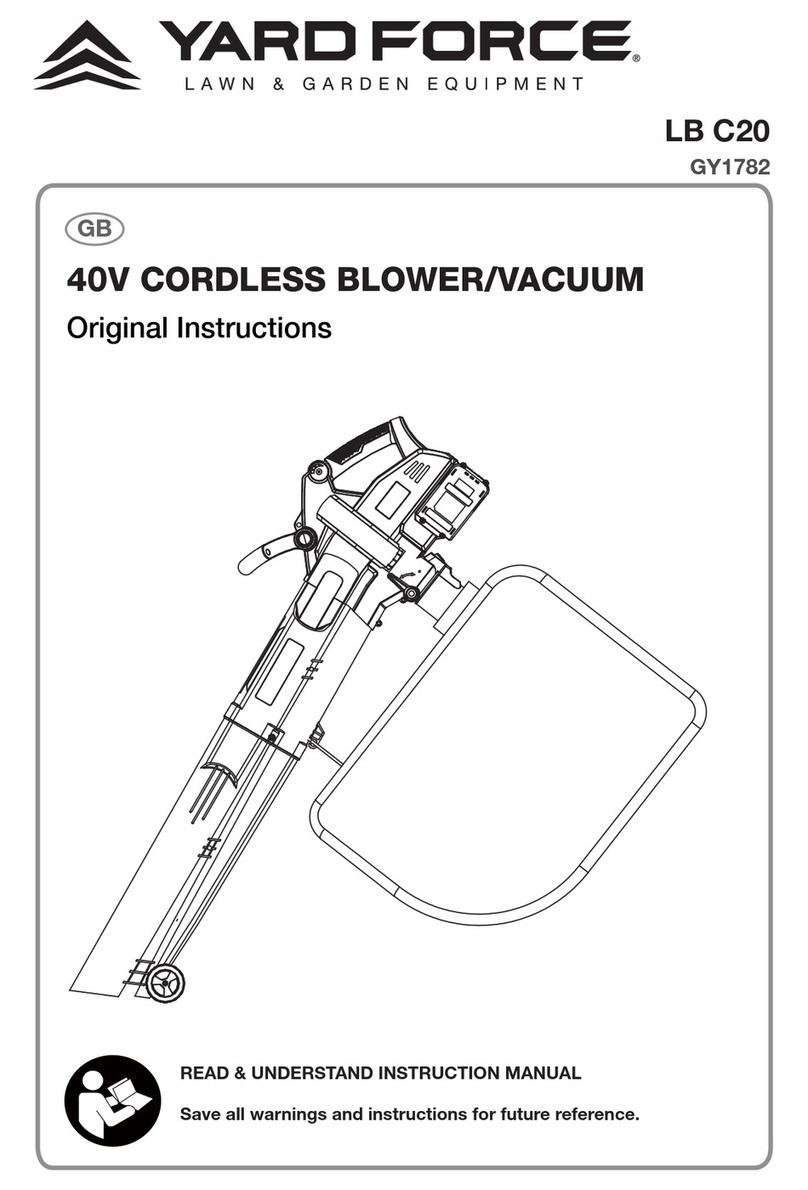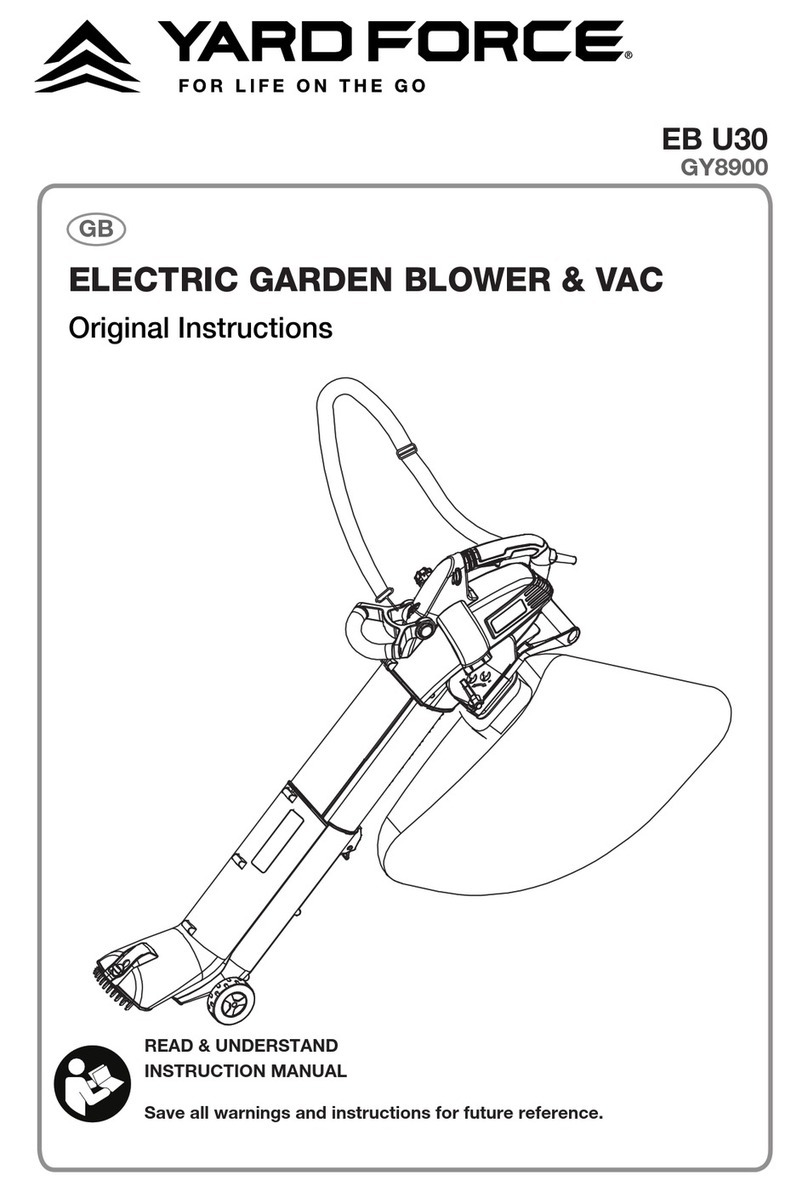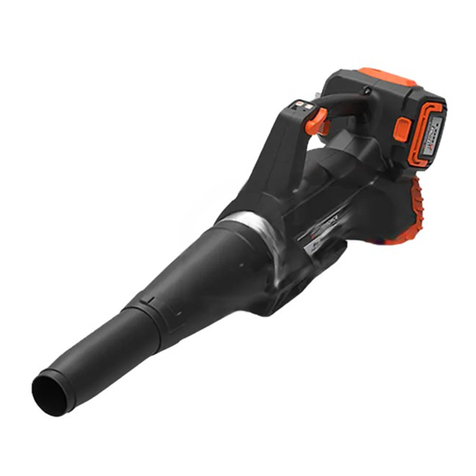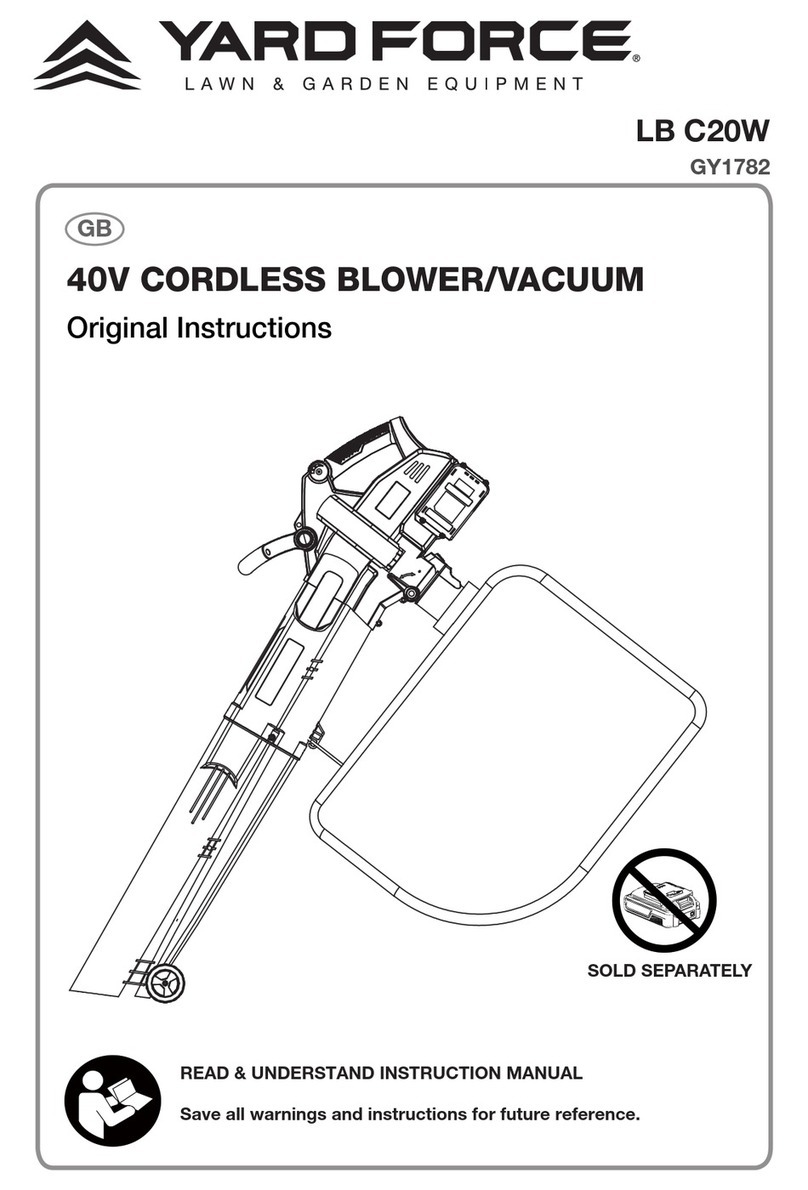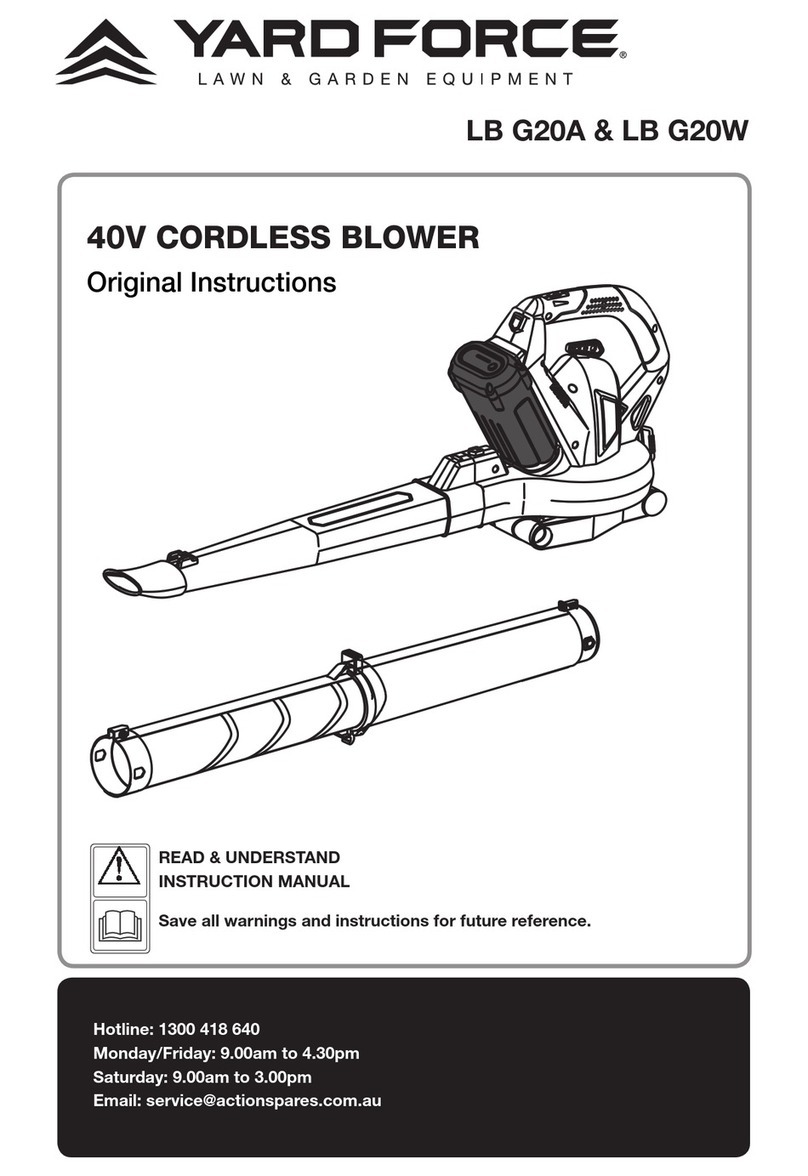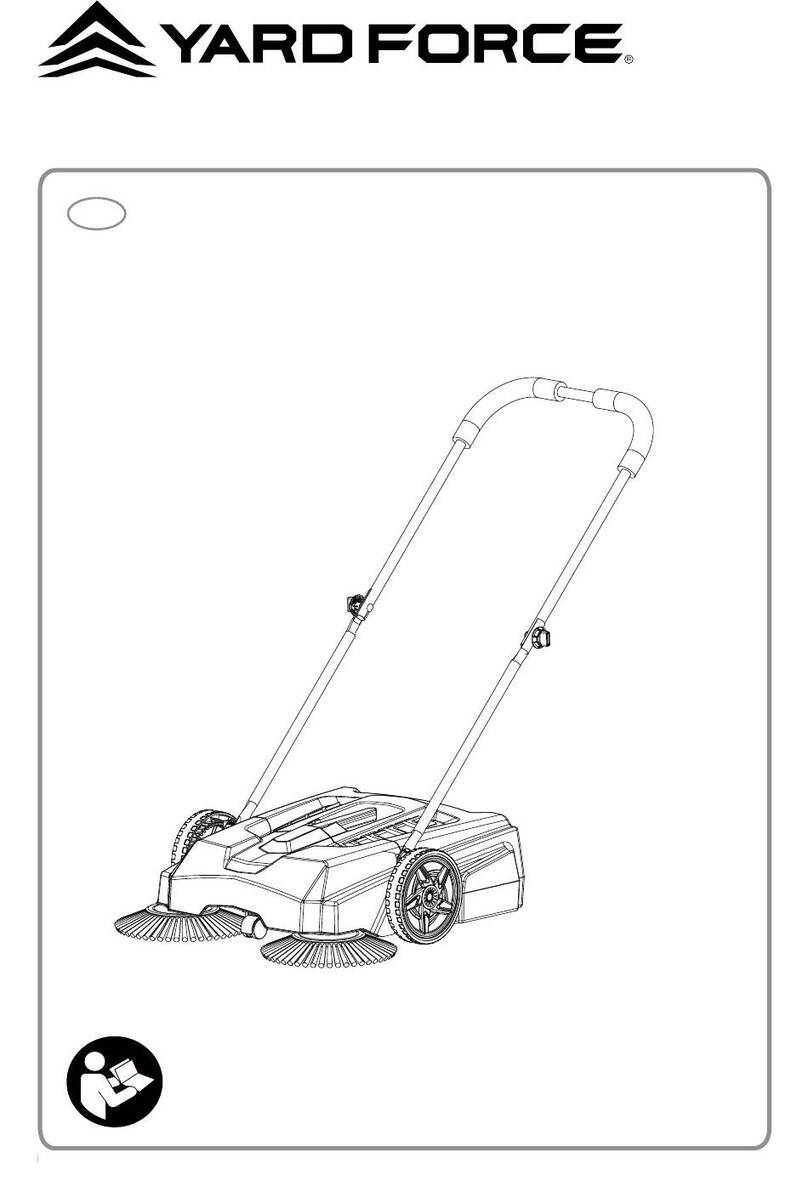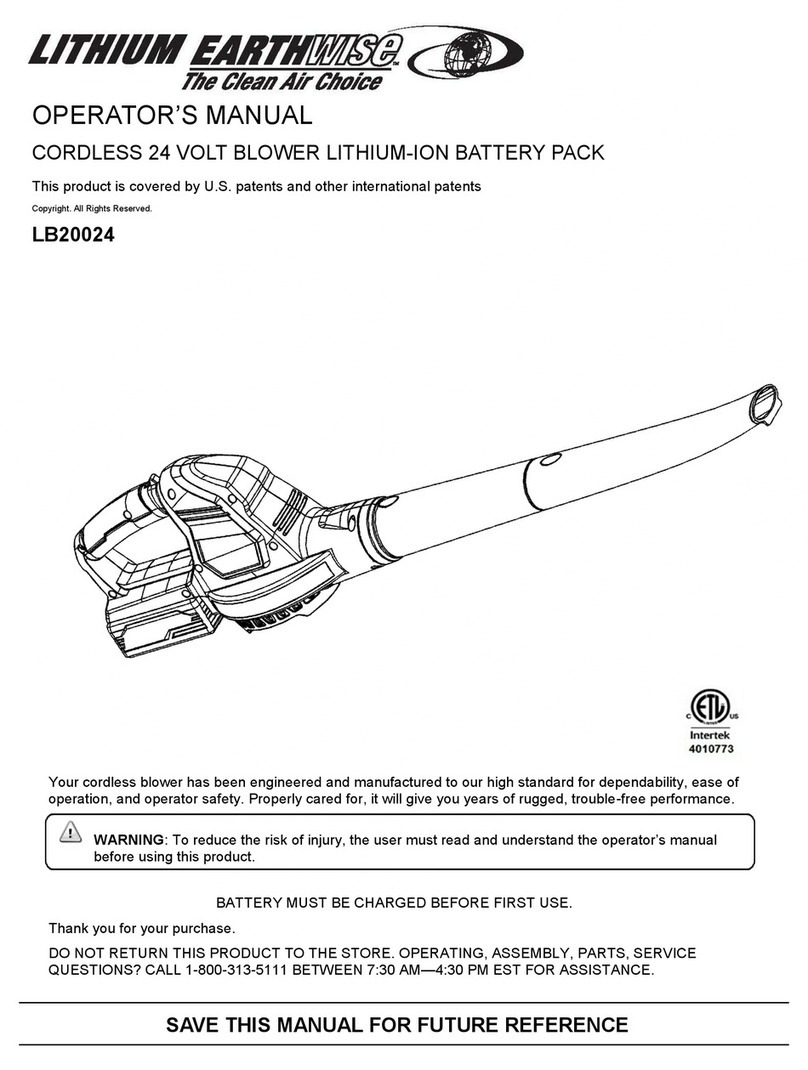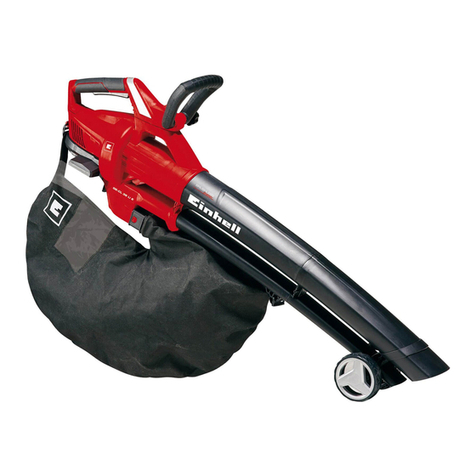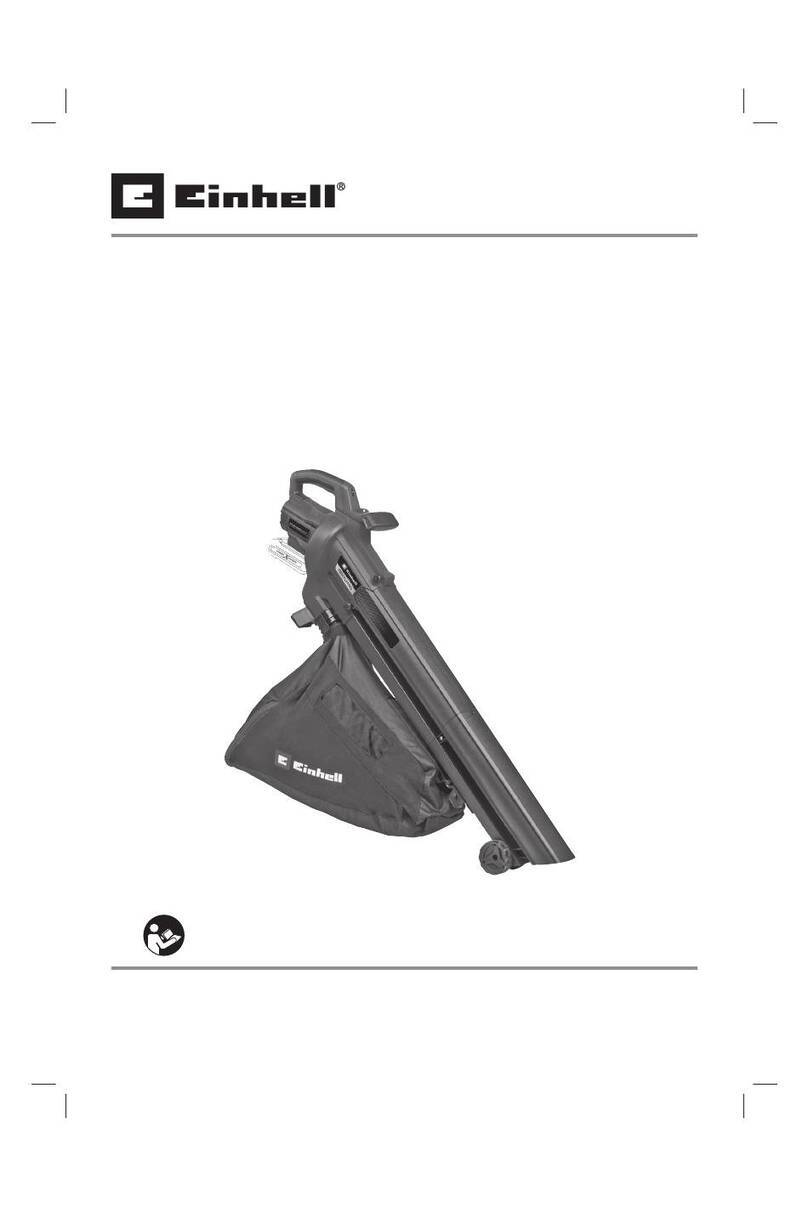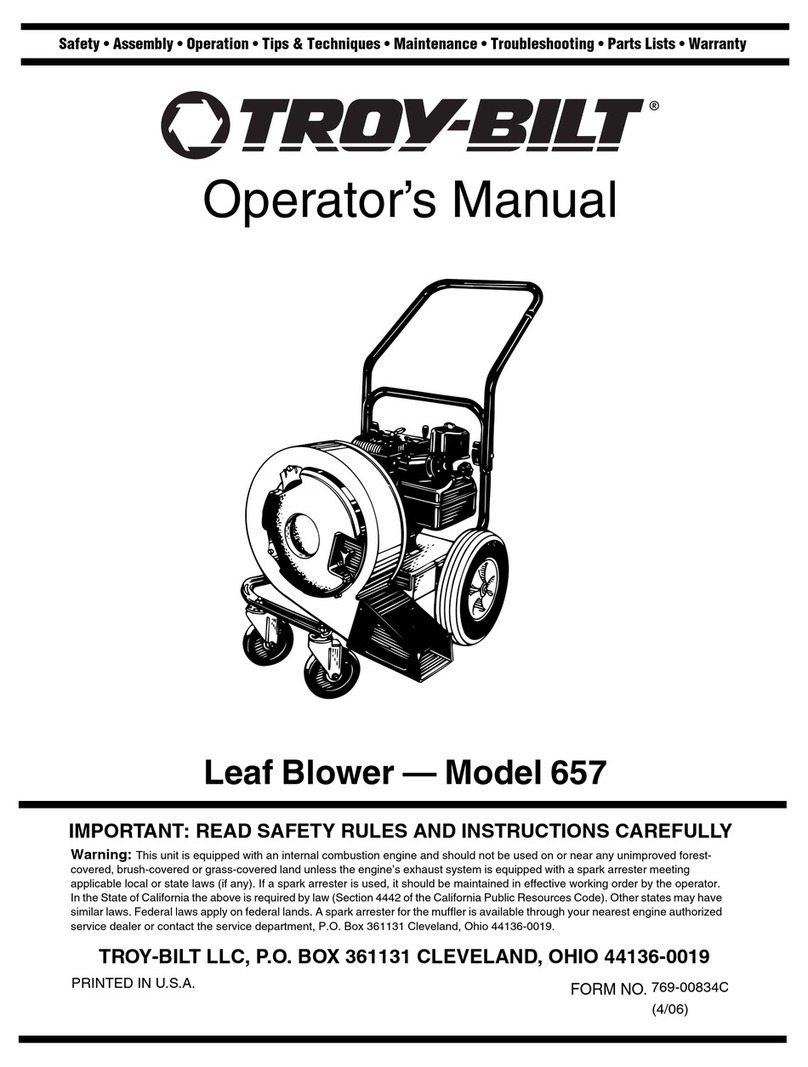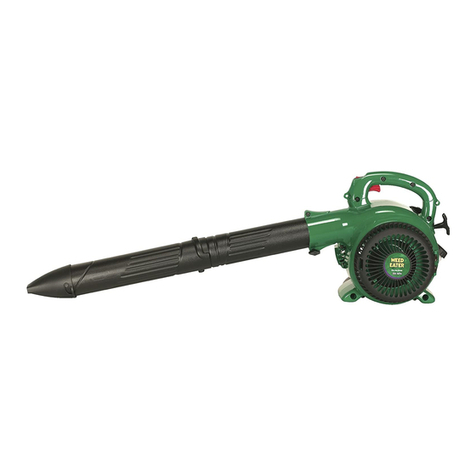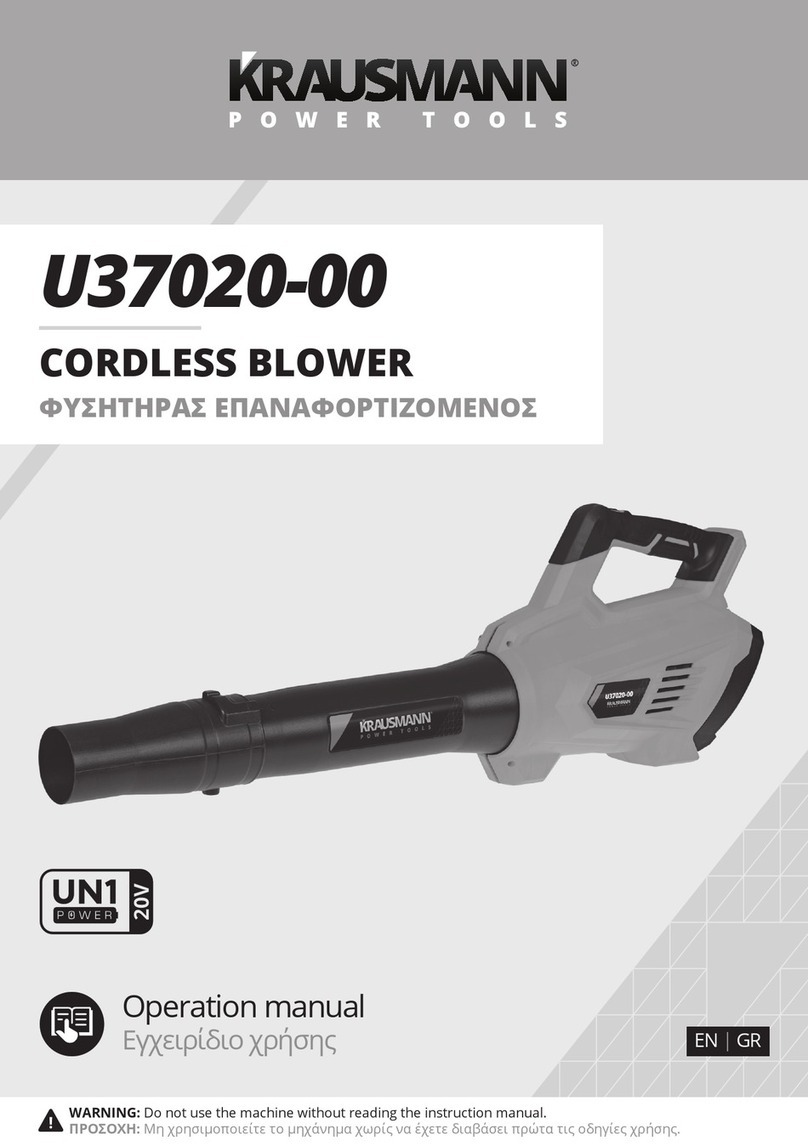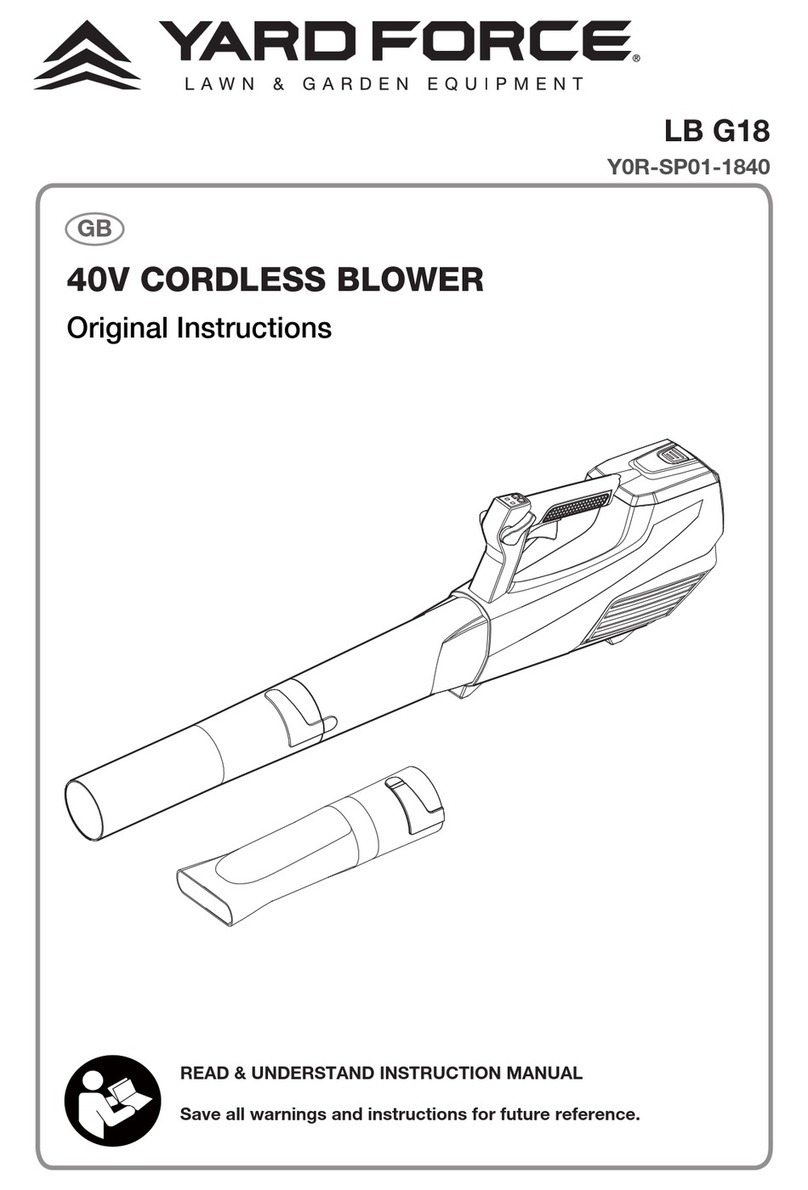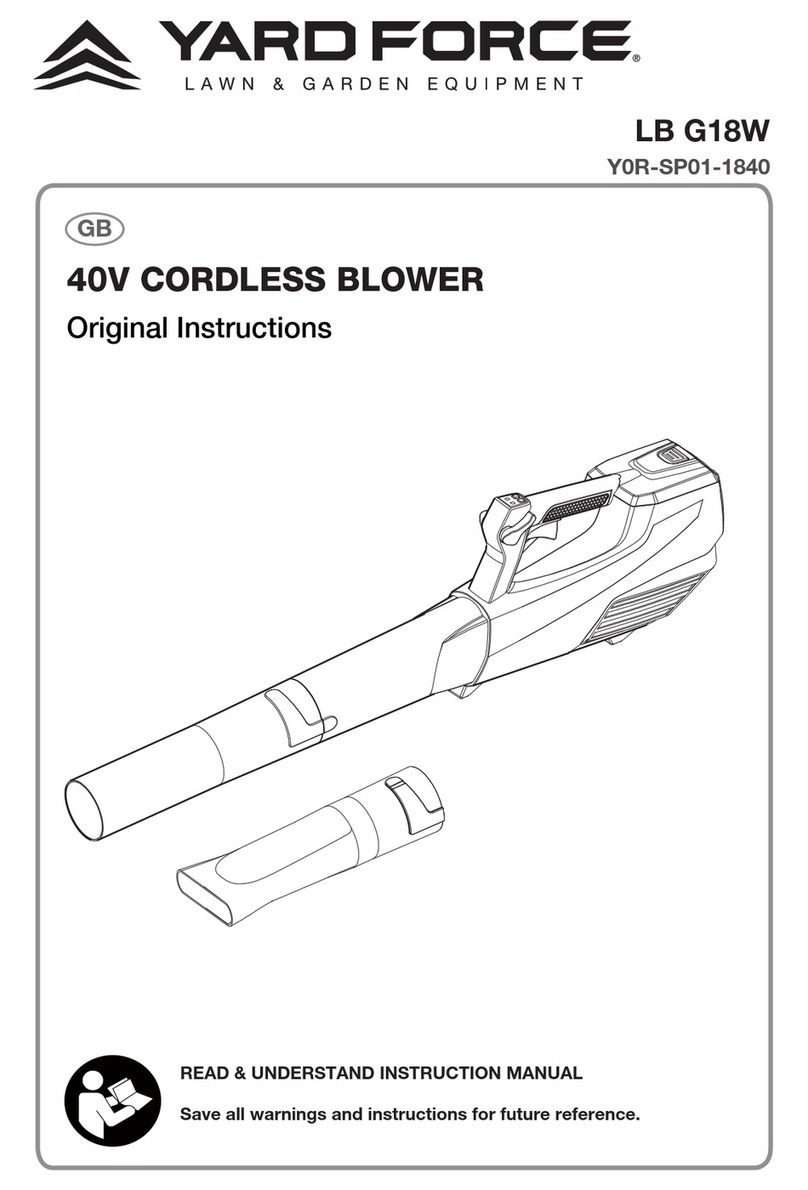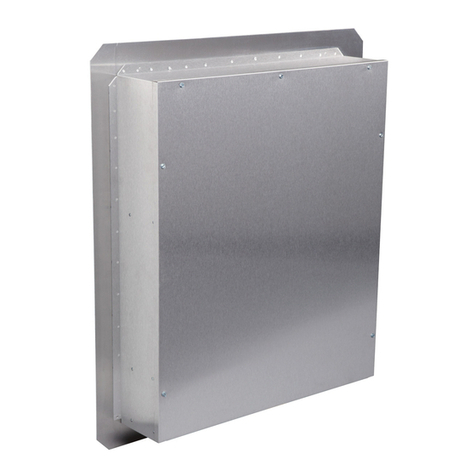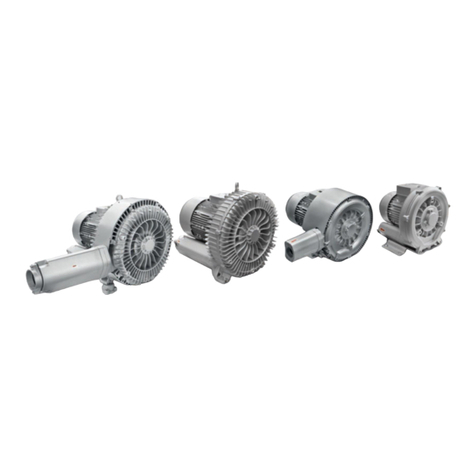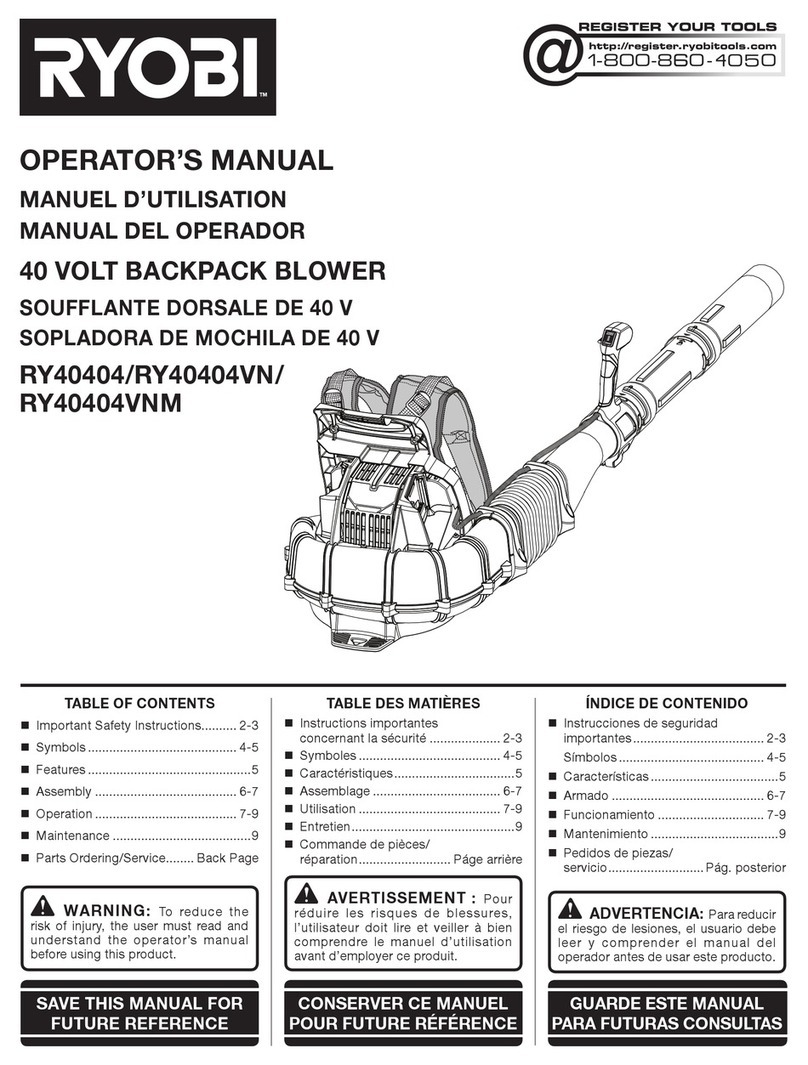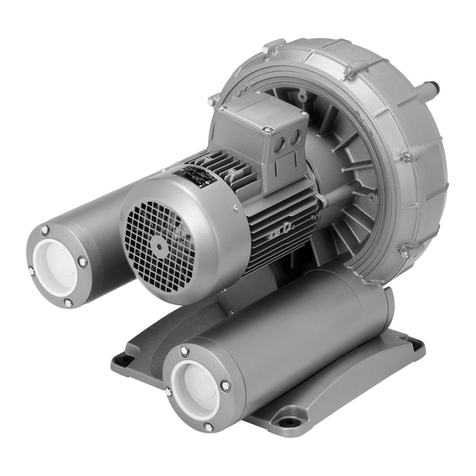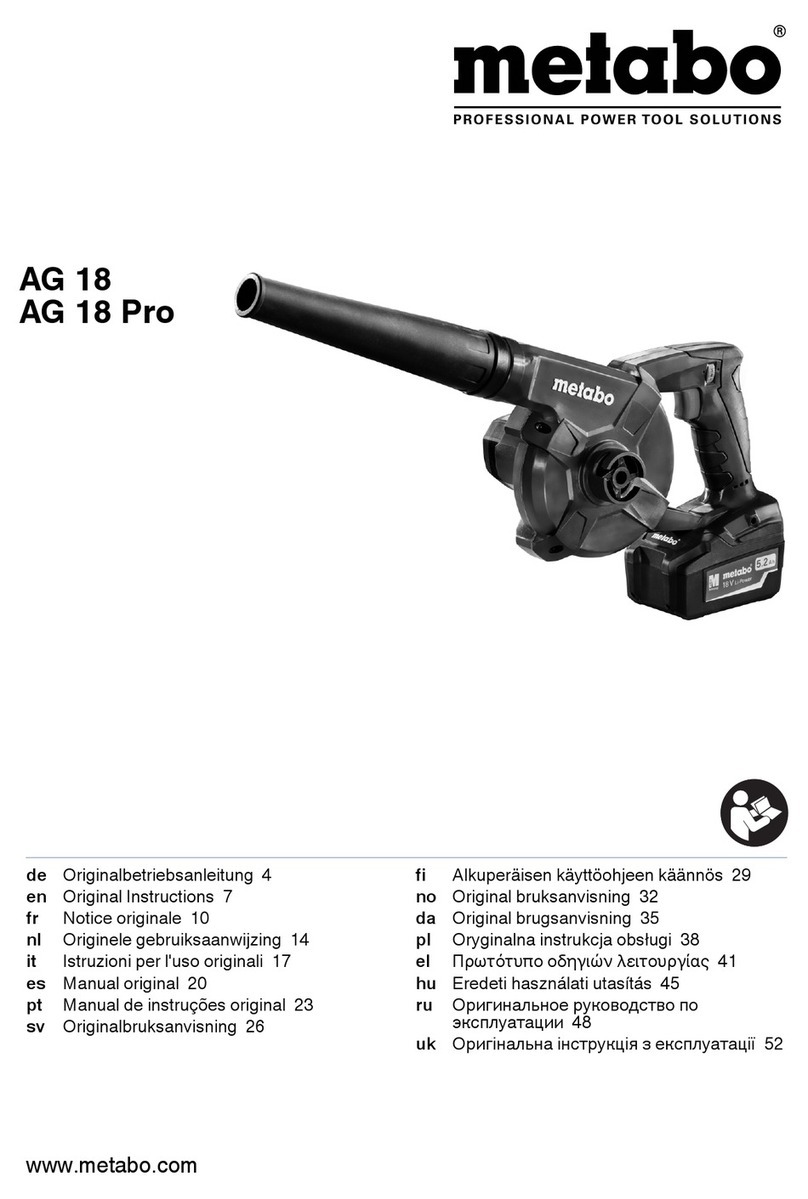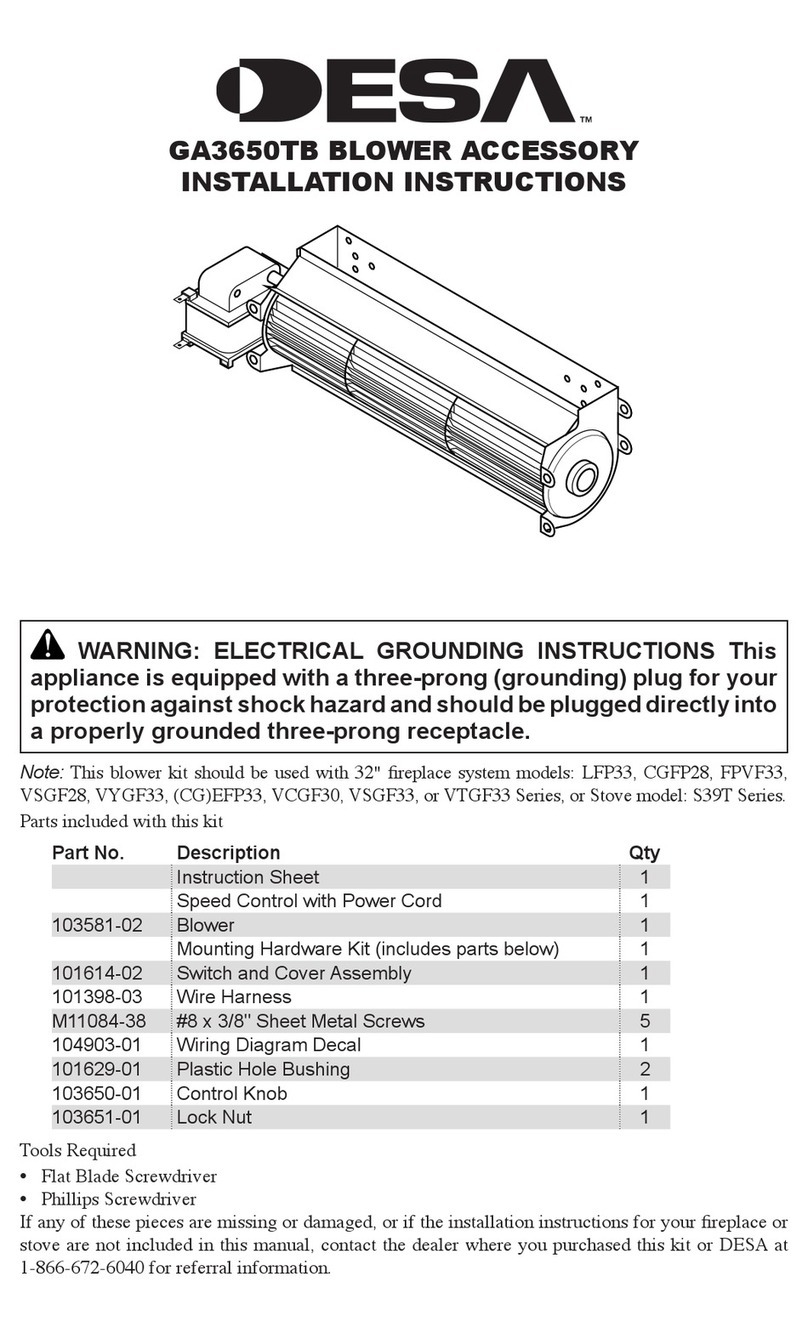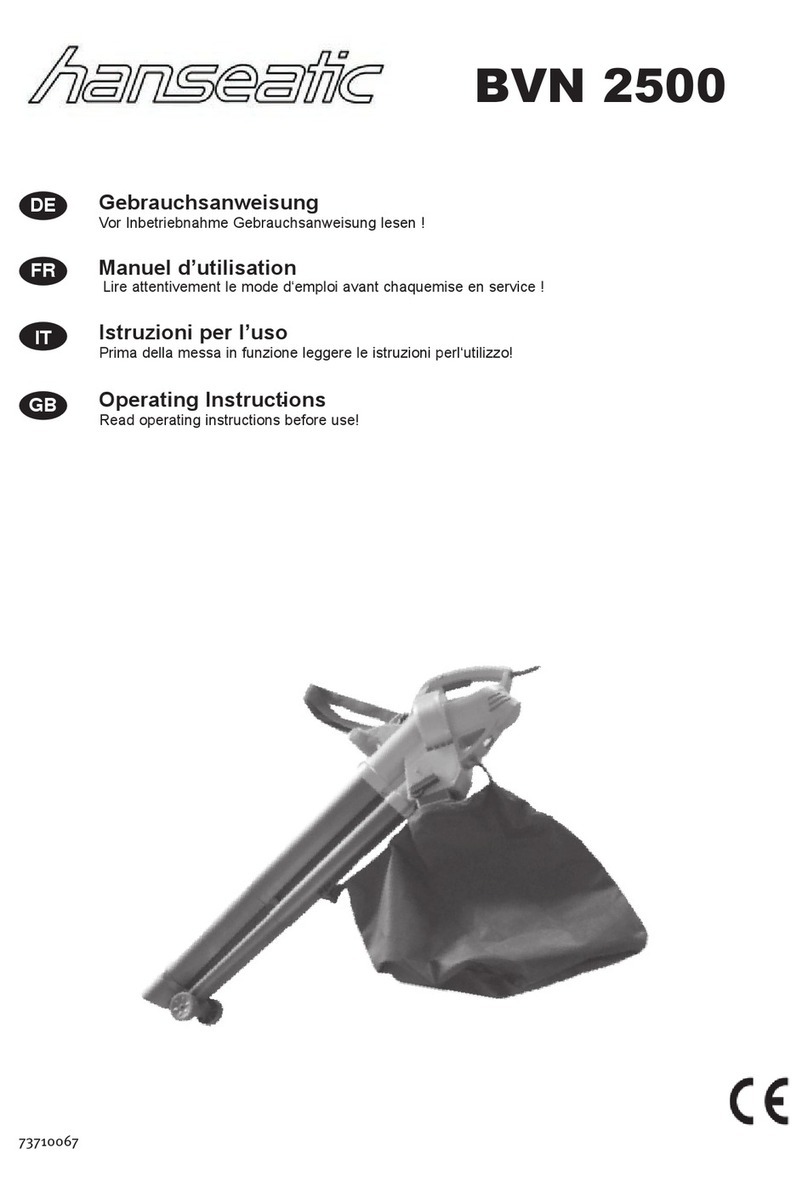
14 15
PRODUCT SAFETY WARNINGS
12. Use only the charger supplied by the manufacturer to
recharge.
13. Do not leave blower unattended when the battery is
inserted. Remove the battery when the blower is not
in use and before servicing.
14. Do not operate blowers in explosive atmospheres,
such as in the presence of ammable liquids, gases,
or dust. Blowers create sparks which may ignite the
dust or fumes.
15. Use the battery operated blower only with specically
designated battery pack. Use of any other batteries
may create a risk of re.
16. Stay alert, watch what you are doing and use
common sense when operating a power blower. Do
not use the blower while tired, upset, or under the
inuence of drugs, alcohol, or medication. A moment
of inattention while operating blowers may result in
serious personal injury.
17. Avoid accidental starting. Be sure that the switch is in
the locked or off position before inserting the battery
pack. Carrying blowers with your nger on the switch
or inserting the battery pack into a blower with the
switch on invites accidents.
18. Use safety equipment. Always wear eye protection.
Dust mask, non-skid safety shoes, hard hat, or
hearing protection must be used for appropriate
conditions.
19. Do not use on a ladder, rooftop, tree, or other
unstable support. Stable footing on a solid surface
PRODUCT SAFETY WARNINGS
enables better control of the blower in unexpected
situations.
20. Always take care of your feet, children, or pets
around you when removing the battery pack from
blower. Serious injury could result if the battery pack
falls. NEVER remove the battery pack when in a high
position.
21. Do not use the blower if switch does not turn it on
or off. A blower that cannot be controlled with the
switch is dangerous and must be repaired.
22. Disconnect the battery pack from the blower before
making any adjustments, changing accessories, or
storing the blower. Such preventive safety measures
reduce the risk of starting the blower accidentally.
23. Turn off all controls before removing the battery.
24. DO NOT attempt to clear clogs from the unit without
rst removing the battery.
25. Check for misalignment or binding of moving parts,
breakage of parts, and any other condition that may
affect the blower’s operation. If damaged, have the
blower serviced before using. Many accidents are
caused by poorly maintained blowers.
26. Keep the blower and its handle dry, clean and free
from oil and grease. Always use a clean cloth when
cleaning. Never use brake uids, gasoline, petroleum-
based products, or any strong solvents to clean your
blower. Following this rule will reduce the risk of loss
of control and deterioration of the enclosure plastic.
